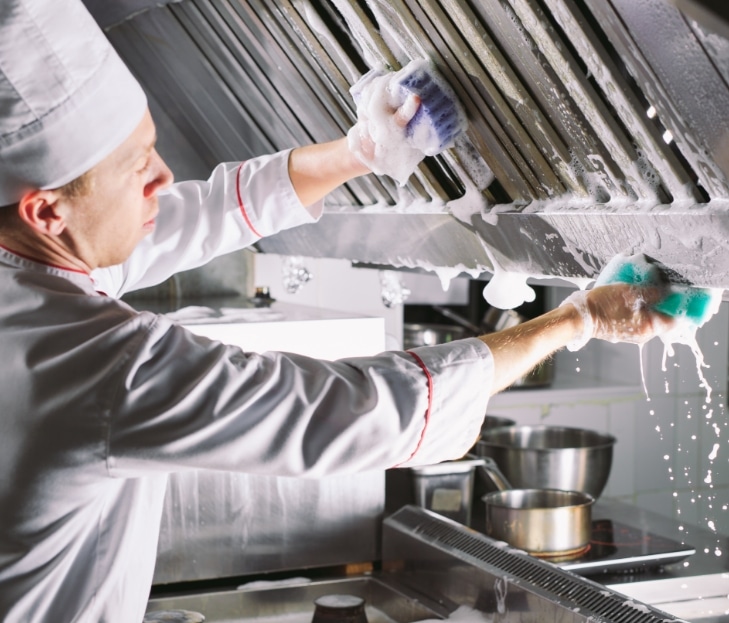The Ultimate Kitchen Guide: Food Safety
At Midlands Catering Equipment, we understand the critical importance of maintaining high standards of food safety to ensure the well-being of your customers and the reputation of your establishment.
In this guide, we will provide you with essential tips, best practices, and expert advice to help you establish and maintain a safe and hygienic environment in your kitchen.
Ensuring Compliancy In The Kitchen
1. Importance of Food Safety
Ensuring food safety is paramount in any food service establishment. By prioritizing food safety, you protect your customers from potential foodborne illnesses and safeguard your business from legal issues and reputation damage.
A proactive approach to food safety not only promotes customer trust but also enhances operational efficiency and staff morale.
2. Personal Hygiene
Maintaining good personal hygiene is the foundation of food safety. All staff members should adhere to the following practices:
- Look for appliances with the ENERGY STAR label, which indicates high energy efficiency.
- Opt for induction cooktops that heat up quickly and use less energy than conventional stovetops.
- Invest in a refrigerator with advanced temperature control features and energy-saving modes.
For more advice visit our Hospitality Catering Equipment page and feel free to get in touch
3. Cross-Contamination Prevention
Cross-contamination occurs when harmful bacteria from one food source are transferred to another, leading to potential foodborne illnesses. Prevent cross-contamination by implementing the following measures:
- Use separate cutting boards for raw meats, vegetables, and other food groups.
- Clean and sanitize all utensils and surfaces, including countertops, knives, and cutting boards, after each use.
- Store raw meats in sealed containers on the bottom shelf of the refrigerator to prevent their juices from dripping onto other foods.
- Ensure that employees are aware of the risks and understand the importance of avoiding cross-contamination.
4. Proper Food Storage
Proper food storage is crucial for maintaining freshness and preventing the growth of harmful bacteria. Follow these guidelines for safe food storage:
- Keep perishable foods refrigerated at temperatures below 40°F (4°C).
- Store raw meats, poultry, and seafood on the lowest shelves of the refrigerator to prevent their juices from dripping onto other foods.
- Regularly check the expiration dates of food products and discard any items that have expired.
- Utilize a first-in, first-out (FIFO) system to ensure older products are used before newer ones.
Are you in the education sector? Visit this page to understand more about the solutions we provide.
5. Temperature Control
Maintaining proper temperatures is vital in preventing the growth of harmful bacteria. Follow these temperature control guidelines:
Conserving water is an essential part of an energy-saving kitchen. Follow these water-saving tips:
- Cook foods to their appropriate internal temperatures using a calibrated thermometer.
- Keep hot foods above 140°F (60°C) and cold foods below 40°F (4°C).
- Avoid leaving perishable foods at room temperature for extended periods.
- Regularly calibrate and monitor the accuracy of your kitchen’s refrigeration and cooking equipment.

6. Cleaning and Sanitisation
A clean and sanitary kitchen is essential for food safety. Develop a comprehensive cleaning and sanitisation schedule that includes the following:
- Regularly clean and sanitize all surfaces, equipment, and utensils using appropriate cleaning agents.
- Pay special attention to high-risk areas such as cutting boards, prep surfaces, and kitchen sinks.
- Implement a pest control program to prevent infestations and eliminate potential sources of contamination.
- Train staff on proper cleaning and sanitization procedures and ensure their adherence to these protocols.
7. Hazard Analysis and Critical Control Points (HACCP)
Implementing a Hazard Analysis and Critical Control Points (HACCP) system is a proactive approach to food safety management. Consider the following steps in implementing HACCP:
- Conduct a thorough analysis of potential hazards in your kitchen.
- Identify critical control points (CCPs) where hazards can be prevented, eliminated, or reduced.
- Establish critical limits and monitoring procedures for each CCP.
- Develop corrective actions to address deviations from critical limits.
- Implement effective record-keeping systems to track and document HACCP procedures.
- Regularly review and update your HACCP plan to reflect changes in the kitchen’s operations.
In conclusion, prioritizing food safety in your kitchen is essential for the success of your business and the health of your customers. By following the guidelines outlined in this comprehensive guide, you can establish a safe and hygienic environment that promotes trust, reduces risks, and enhances overall operational efficiency. Remember, food safety is an ongoing commitment, and staying up to date with the latest practices is crucial for maintaining excellence in your kitchen.
We hope this guide has provided you with valuable insights and practical tips to outrank other websites and establish yourself as a leader in food safety. Should you require further assistance or have any questions, please do not hesitate to reach out to us.
Note: This article is intended to provide general guidelines and should not be considered a substitute for professional advice. Always consult with local health authorities and regulatory bodies to ensure compliance with specific food safety regulations and requirements.

Share This: